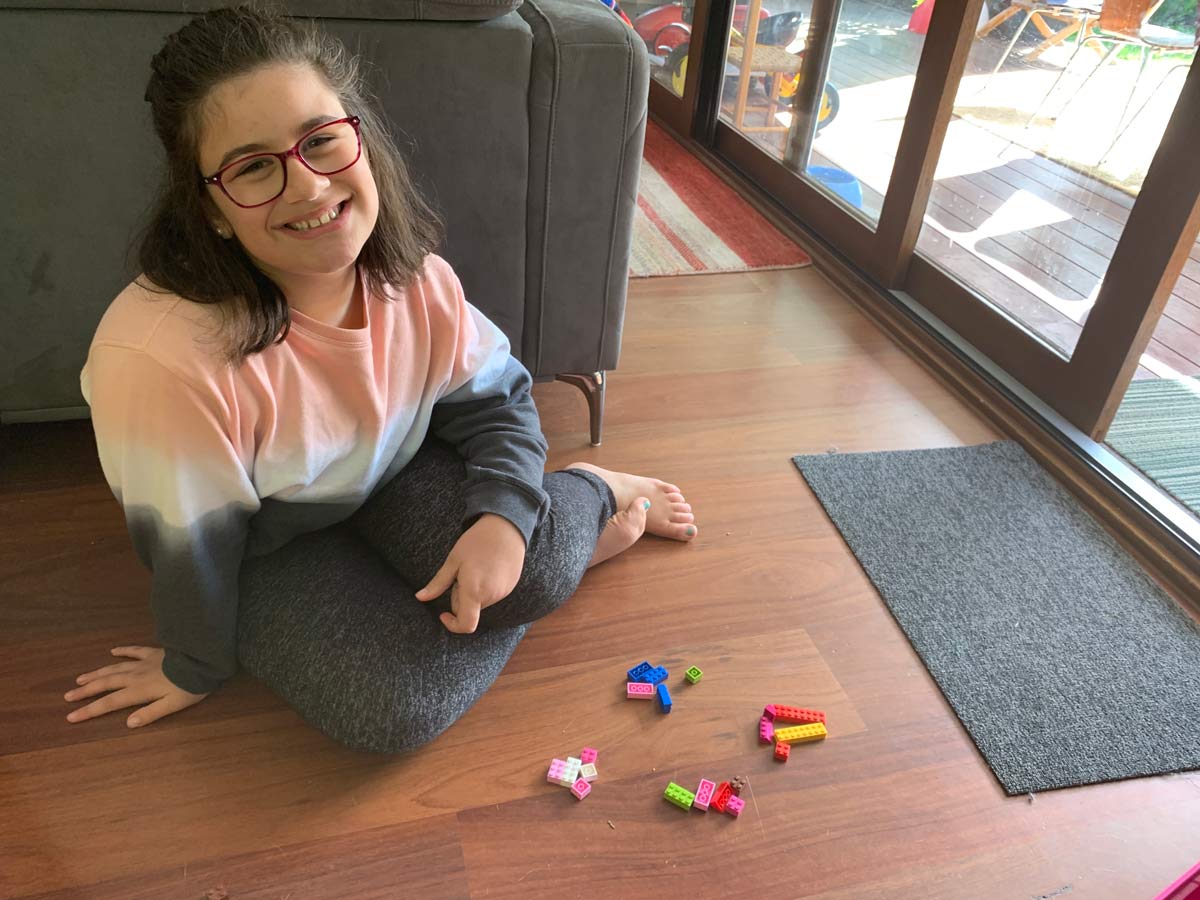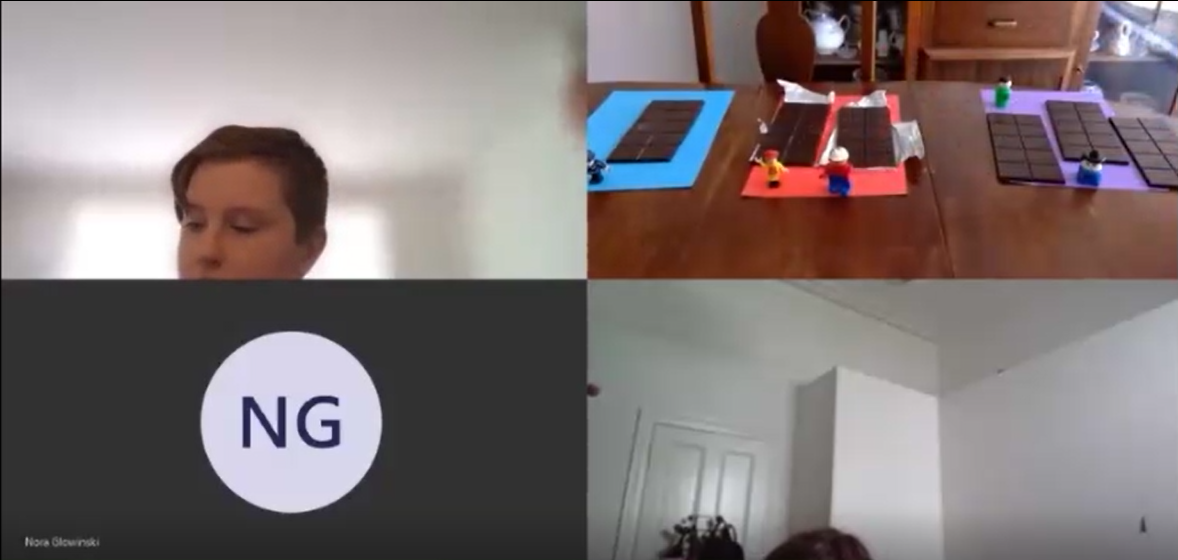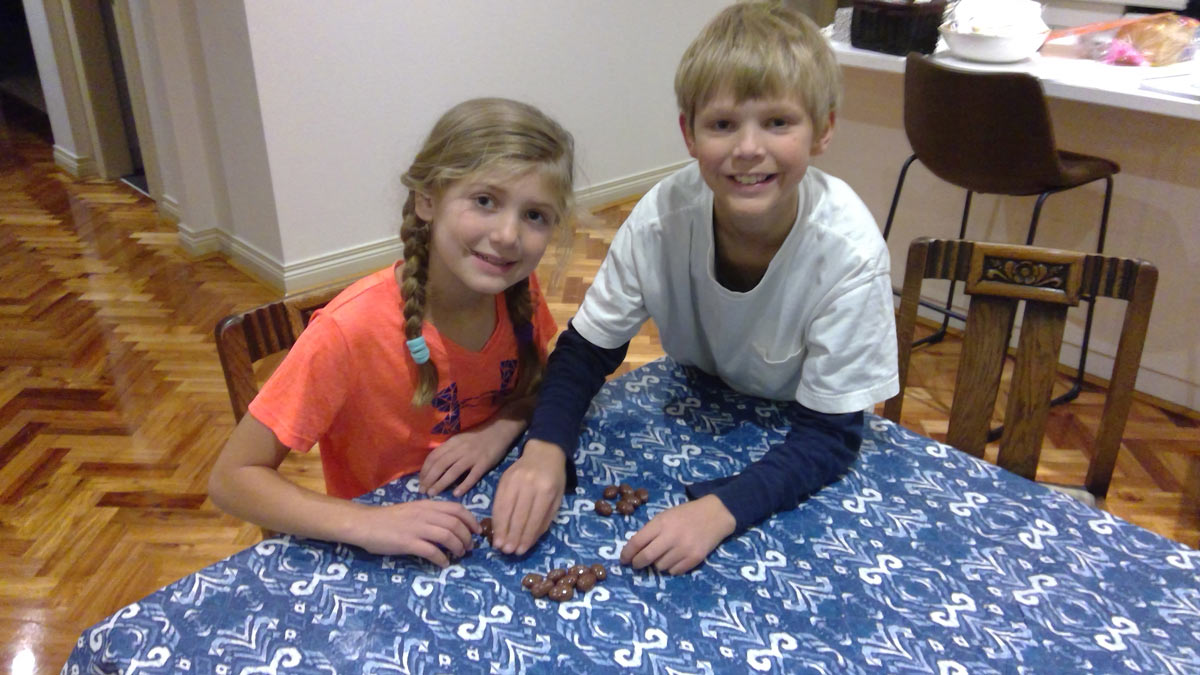
Year 5 students tend to grasp the concept of fractions by visualising them. Doing that in a virtual classroom is a bit tricky, but not impossible, as Anne-Louise Tammesild and Will Ponsford explain.
As team-teachers, we’ve been working with our students on the concept of division, with a focus on fractional parts. It’s one of the maths curriculum outcomes for Year 5.
We’ve found it’s useful to provide opportunities for students at this learning stage to visualise fractions, and in our classroom on campus that’s a relatively straightforward thing to do. In our virtual classroom that’s a little bit trickier, but not impossible. Our solution? Lego and chocolate. Kids love both, and you’re likely to find them in most homes, but we first checked with parents that chocolate was okay.
Before Anne-Louise ran the lesson we’ll describe below, we made and shared three videos that explored halves, thirds and quarters, using Lego blocks as examples, so that students at home could divide, or ‘share,’ various numbers of Lego blocks into various numbers, to consolidate their understanding.
Using Lego blocks also gave us traction for the Lego and chocolate fractions lesson, for which Anne-Louise took the lead, livestreamed in MS Teams. It went something like this.
Three tables of chocolate
‘Here are three tables and on each table is some chocolate. Table 1 has one 10-piece block of chocolate, table 2 has two 10-piece blocks of chocolate and table 3 has three 10-piece blocks of chocolate.
‘First, I’d like you to choose one of the Lego characters I have here, which is going to be your avatar.’
The purpose of the Lego avatars was to ensure students actively participated in the livestreamed lesson.
‘Next, I want you to choose which table you want your Lego avatar to sit at, but there’s an important thing to remember: the chocolate on the table you choose for your Lego avatar is going to be shared out equally between all the other avatars who end up on that table.’
This scenario invites students to analyse and make projections about their potential chocolate haul as class members choose their table, but our key purpose was to arrive at a point where 10, 20 and 30 pieces of chocolate have to be divided between three groups of Lego characters.
Involving family members
Anne-Louise’s son, Henry Tammesild, a Year 11 student at Wesley College, was available to assist in this lesson. The students know Henry and thoroughly enjoyed his input, and his help with the tricky logistics of this lesson certainly helped. The highlight?
‘Ms T?’
‘Yes?’
‘Your son just stole some chocolate.’
His claim later: it was important to show the students how the chocolate representation of a fraction can be varied.
Our reaction: fractionally believable.
We’d also asked parents to join the lesson to see how we’re teaching the concept of division, so they can walk alongside their children as their understanding of division and fractions develops. Seeing how teacher questioning works helps parents continue the discussion with their child. Yanina Celestino and her daughter Milly Evans, for example, followed up to investigate different ways of visually representing halves, thirds and quarters using coloured squares.



Camilla Wolff-Ruiz used post-it notes on a fraction numberline to visualise the values of different fractions.
Katie Mactier says her daughter Charlie Henderson has embraced online learning. ‘Charlie’s enthusiasm for online learning is a reflection on the incredible effort by Wesley to ensure that students’ schooling is not compromised. I’m seeing the individual efforts each teacher makes every day to deliver fun and educational lessons, and I feel very lucky.’


Now that our students have got their heads around fractions, we’re seeing them apply their knowledge at home. Will Mallon has even been playing a ‘fractions game’ with his younger sister, Lizzie. Exactly what is motivating this interest remains unclear. Once we’ve completed a little Year 5 chemistry exploration on the neurological effects of theobromine, phenylethylamine and anandamide we might just have some answers.
Anne-Louise Tammesild and Will Ponsford are Year 5 co-teachers at Wesley’s Elsternwick Campus.
